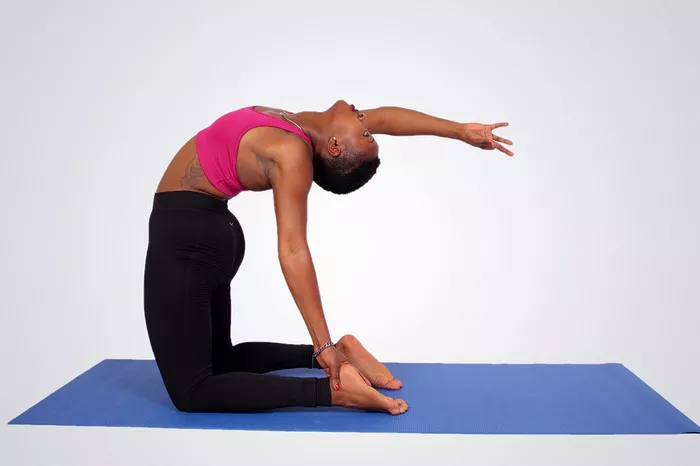Hot yoga has surged in popularity over the last few decades, offering practitioners a unique combination of intense physical workout and meditative relaxation in a heated environment. However, as its popularity grows, so do concerns about its safety. One pressing question among enthusiasts and skeptics alike is whether hot yoga can make you sick. This article delves into the potential health risks associated with hot yoga, examining scientific evidence, expert opinions, and personal experiences to provide a comprehensive understanding of the practice’s impact on health.
The Allure of Hot Yoga
Hot yoga, particularly Bikram yoga, involves performing a series of 26 postures in a room heated to approximately 105°F (40°C) with 40% humidity. This environment is designed to mimic the climate of India, where yoga originated. The heat is believed to enhance flexibility, promote detoxification through sweating, and improve cardiovascular health by elevating heart rates. These purported benefits have made hot yoga a popular choice for those seeking a vigorous and challenging workout.
Potential Health Benefits
Before exploring the potential risks, it’s important to acknowledge the benefits that attract many to hot yoga. Some of these benefits include:
1. Enhanced Flexibility: The heat helps to loosen muscles, allowing for a greater range of motion and deeper stretches. This can be particularly beneficial for those recovering from injuries or looking to improve their overall flexibility.
2. Increased Strength and Tone: The series of poses in hot yoga is designed to work every muscle group, contributing to improved muscle tone and strength.
3. Cardiovascular Health: The elevated heart rate experienced during hot yoga can provide a cardiovascular workout similar to aerobic exercises like running or cycling.
4. Stress Relief and Mental Clarity: The combination of physical exertion and meditative focus can help reduce stress levels and improve mental clarity and overall well-being.
5. Detoxification: Proponents of hot yoga claim that the intense sweating helps to flush toxins from the body, although this claim is debated among health professionals.
See Also: How to Make a Hot Yoga Room at Home
The Risks of Hot Yoga
While the benefits of hot yoga are well-publicized, the potential risks are often less discussed. However, it’s crucial to be aware of these risks to make an informed decision about whether hot yoga is right for you.
1. Dehydration
One of the most significant risks associated with hot yoga is dehydration. The high temperatures and intense physical activity cause excessive sweating, which can lead to a significant loss of fluids and electrolytes. Dehydration can cause symptoms ranging from mild discomfort to severe health issues, such as:
- Dizziness and Lightheadedness: As the body loses water, blood volume decreases, leading to lower blood pressure and reduced oxygen flow to the brain.
- Muscle Cramps: Loss of electrolytes, particularly sodium and potassium, can lead to painful muscle cramps.
- Heat Exhaustion and Heat Stroke: In severe cases, dehydration can lead to heat exhaustion or heat stroke, both of which require immediate medical attention. Symptoms include confusion, rapid heartbeat, and loss of consciousness.
2. Overstretching and Injuries
The heat in a hot yoga class can create a false sense of flexibility, making it easier to push beyond one’s normal range of motion. This can increase the risk of overstretching and injuries such as:
- Muscle Strains: Overextending muscles can lead to strains or even tears, which can be painful and require significant recovery time.
- Joint Injuries: The ligaments and tendons around joints can also be overstretched, leading to joint instability and potential long-term damage.
3. Hyperthermia
Hyperthermia, or elevated body temperature, is a serious risk in hot yoga. The body’s natural cooling mechanisms can be overwhelmed in the heated environment, leading to a dangerous rise in core temperature. Symptoms of hyperthermia include:
- Nausea and Vomiting: As the body struggles to cope with the heat, digestive disturbances can occur.
- Headache and Fatigue: Persistent heat exposure can lead to headaches and a general feeling of fatigue.
- Confusion and Disorientation: Severe hyperthermia can affect cognitive functions, leading to confusion and disorientation.
- Organ Damage: In extreme cases, hyperthermia can cause damage to vital organs, including the brain and kidneys.
Who is at Risk?
While hot yoga can pose risks to anyone, certain groups of people may be more susceptible to the adverse effects. These include:
1. Individuals with Pre-existing Health Conditions: People with cardiovascular issues, respiratory problems, or heat sensitivity should consult a doctor before participating in hot yoga. The intense environment can exacerbate these conditions and lead to serious health complications.
2. Pregnant Women: Pregnant women are generally advised to avoid hot yoga due to the risk of hyperthermia, which can harm fetal development. The American College of Obstetricians and Gynecologists recommends that pregnant women avoid activities that raise core body temperature excessively.
3. Older Adults: As people age, their ability to regulate body temperature decreases. Older adults may be more prone to dehydration and hyperthermia during hot yoga sessions.
4. Beginners: Those new to yoga may not be fully aware of their physical limits and might push themselves too hard in a hot yoga class, leading to injuries and heat-related illnesses.
Mitigating the Risks
Despite the risks, many people practice hot yoga safely and enjoy its benefits. Here are some strategies to mitigate the risks and ensure a safer hot yoga experience:
1. Hydration
- Pre-Hydration: Drink plenty of water before the class to ensure you start hydrated. This includes consuming water throughout the day leading up to your session.
- During Class: Bring a large water bottle and take small, frequent sips throughout the class to replenish lost fluids.
- Post-Class: Continue to hydrate after the class to replace any fluids lost during the session. Electrolyte drinks can also help to restore balance.
2. Listening to Your Body
Know Your Limits: Pay attention to how your body feels and avoid pushing yourself too hard. If you feel dizzy, lightheaded, or nauseous, take a break and rest.
- Modify Poses: Don’t be afraid to modify poses or take less intense versions if you’re feeling overheated or fatigued.
- Cool Down: Allow time for a proper cool-down period at the end of the class to help your body gradually return to its normal temperature.
3. Clothing and Equipment
- Wear Light, Breathable Clothing: Choose moisture-wicking fabrics that help keep you cool and dry.
- Bring a Towel: A towel can help manage sweat and prevent slipping on your mat.
- Yoga Mat: Consider using a non-slip yoga mat designed for hot yoga to maintain stability during poses.
4. Choose the Right Environment
- Class Size and Ventilation: Smaller classes and well-ventilated rooms can make a significant difference in comfort levels.
- Instructor Experience: Choose classes led by experienced instructors who are trained in hot yoga and can guide you safely through the practice.
Scientific Perspectives
The scientific community has conducted several studies to understand the impact of hot yoga on health. Here’s a look at some key findings:
1. Cardiovascular and Thermoregulatory Responses
A study published in the Journal of Exercise Science & Fitness examined the cardiovascular and thermoregulatory responses of participants during a hot yoga session. The study found that while hot yoga can significantly increase heart rate and core body temperature, it is generally well-tolerated by healthy individuals. However, the study also highlighted the importance of proper hydration and monitoring of symptoms to prevent heat-related illnesses.
2. Effects on Flexibility and Strength
Research published in the Journal of Strength and Conditioning Research investigated the effects of hot yoga on flexibility and strength. The study concluded that hot yoga can improve flexibility and muscular endurance. However, the researchers noted that the perceived increase in flexibility might lead to overstretching and potential injuries if practitioners are not cautious.
3. Psychological Benefits
The Journal of Alternative and Complementary Medicine published a study exploring the psychological benefits of hot yoga. The study reported reductions in stress and improvements in mood among participants. The combination of physical exertion and the meditative aspects of yoga contributed to these positive outcomes.
Personal Experiences
Personal anecdotes from hot yoga practitioners can offer additional perspectives on the practice’s impact on health. Here are a few stories from individuals who have experienced both the benefits and challenges of hot yoga:
1. Rachel’s Story
Rachel, a 32-year-old yoga enthusiast, began practicing hot yoga to improve her flexibility and manage stress. Initially, she struggled with the heat and felt dizzy during sessions. However, by gradually acclimating to the temperature and ensuring proper hydration, she eventually found that hot yoga significantly improved her physical and mental well-being.
2. Mark’s Experience
Mark, a 45-year-old businessman, tried hot yoga to diversify his workout routine. While he enjoyed the intense workout, he experienced severe muscle cramps and dehydration during his first few classes. After consulting with his instructor and making adjustments to his hydration strategy, Mark was able to continue practicing hot yoga safely.
3. Sarah’s Journey
Sarah, a 28-year-old with asthma, faced challenges in hot yoga due to the humid environment. She found that practicing close to an open door and taking breaks when needed allowed her to participate without exacerbating her condition. Sarah’s experience underscores the importance of adapting the practice to individual health needs.
Conclusion
Hot yoga can offer numerous benefits, including improved flexibility, strength, cardiovascular health, and stress relief. However, the potential risks, such as dehydration, hyperthermia, and injuries, must be carefully managed. By understanding these risks and taking appropriate precautions, practitioners can safely enjoy the advantages of hot yoga.
Ultimately, whether hot yoga is a suitable practice depends on individual health conditions, fitness levels, and personal preferences. Consulting with healthcare providers and experienced instructors can provide additional guidance tailored to your specific needs. With the right approach, hot yoga can be a rewarding and beneficial component of a balanced fitness routine.





















